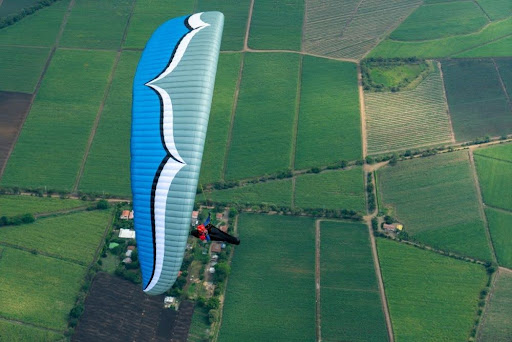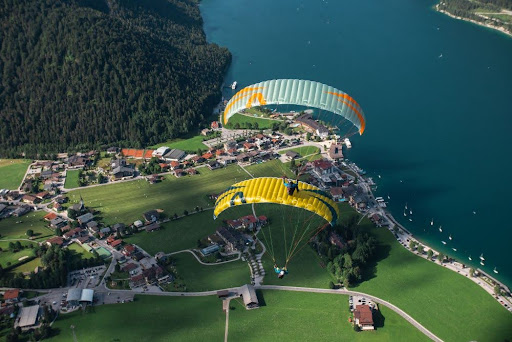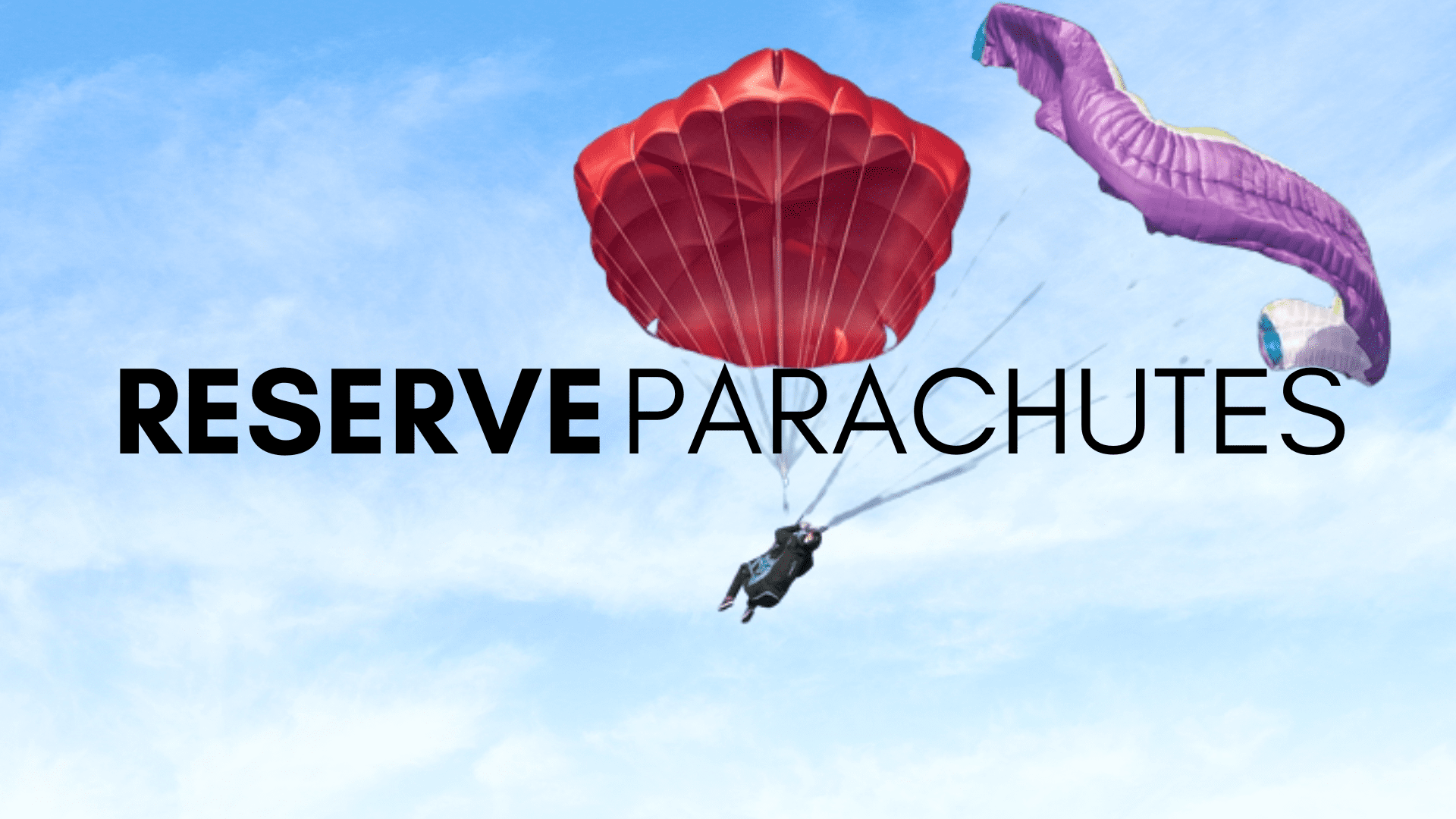
Is It Worth the Risk? How Safe Is Paragliding in 2025
Is It Worth the Risk? How Safe Is Paragliding in 2025 As you sit on the beach and look to

Winter is fast approaching, and while the cold sets in for many, it’s time for some pilots to chase the sun! Whether you’re heading to tropical mountains or desert valleys, flying in warmer destinations during winter can be a dream come true. But to make the most of your trip, it’s essential to pack the right gear. Here’s our take on how to pack for your travels and a list of must-have items to ensure a smooth, safe, and enjoyable paragliding adventure.
Traveling with paragliding gear can indeed be overwhelming, especially when you’re dealing with delicate and bulky equipment. However, with proper planning and some helpful strategies, you can make the process much smoother and ensure your gear arrives safely at your destination. Here’s how:
Invest in a Good Travel Bag
Your travel bag is the first line of defense for your paragliding equipment, so it’s important to choose wisely. A well-padded bag specifically designed for paragliders is ideal, as these bags are built to accommodate the shape and size of your wing, harness, and helmet. Look for a bag with plenty of compartments to help keep your equipment organized and prevent items from knocking into each other during transit. Strong straps and handles are a must for easy carrying, especially through airports or rugged terrains.
It’s also worth considering a bag with wheels for longer journeys, making it easier to transport heavy gear without putting a strain on your back. Some paragliding-specific bags are equipped with features like extra reinforcement in vulnerable areas or integrated waterproof covers to protect your gear from rain or moisture.
We suggest the Supair Trek Rucksack Backpack
Minimize Your Gear
It’s easy to get carried away and want to pack all your equipment for every possible flying condition. However, keeping your gear to a minimum is essential for easier travel and to avoid excess baggage fees. Stick to the absolute essentials: your wing, harness, helmet, reserve parachute, variometer, and radio.
If you plan to fly in a variety of conditions, pack a versatile wing suitable for different weather patterns rather than multiple specialized wings. You may also want to skip extra bulky items like large instruments or extra protective layers if the location offers equipment rentals or if the climate is mild. Traveling light not only reduces stress but also makes it easier to manage your luggage throughout your trip.
Check Airline Regulations
Before heading to the airport, it’s crucial to familiarize yourself with your airline’s policies regarding sports equipment. Paragliding gear is often considered oversized luggage, and each airline has different rules and fees for transporting it. Some airlines may have size or weight restrictions that require special handling or additional charges.
To avoid surprises, check in advance whether you need to declare your gear as sports equipment when booking your ticket. Some airlines offer discounted rates for sports gear, while others may charge steep fees for excess weight or oversized items. It’s also worth investing in a luggage scale to weigh your gear before heading to the airport, ensuring you’re within the airline’s weight limits and prepared for any extra costs.
Secure Your Gear
Once your equipment is packed, it’s vital to ensure everything is securely fastened inside your travel bag. Loose items can shift around during transit, potentially causing damage to delicate parts like your lines or risers. Make sure all zippers, buckles, and straps are properly tightened and that any loose items, such as radios or instruments, are secured in their own compartments or padded areas like your cockpit
For extra peace of mind, you can use additional padding, such as bubble wrap or foam inserts, around more fragile items. Double-check that all sharp objects, such as hooks or carabiners, are covered or separated from softer materials to avoid tears or damage.

1. Supair Compact Case (Light or Regular)
When you’re traveling light but still need to protect your wing, the Supair Compact Case is your go-to. Available in light and regular versions, this case helps you pack your wing tightly, saving space while providing protection. It’s perfect for those warmer climates where weight reduction and efficiency are key. Check out the compact case light here or the regular version here.
2. Supair Cockpit (Light or Regular)
Not only is the Supair cockpit a good item to protect your electronic during your trip, but it also helps you to stay organized while in the air. Whether you opt for the lightweight or regular version, this accessory ensures that your flight instruments, cameras, and other essentials are easily accessible during your flight. Ideal for long XC flights in sunny skies. Discover the cockpit light here or the standard version here.
3. Trek Bag – Heavy Duty for Travel Protection
Your gear is an investment, so it’s crucial to protect it, especially during travel. The Supair Trek Rucksack is built tough to endure the rigors of international travel. Its heavy-duty design ensures your wing and other equipment stay safe, even on bumpy rides to remote launch sites. Check out the Supair Trek Bag here.
4. Hand Warmer Windstopper
Even in warm destinations, the temperature at altitude can drop significantly. Keep your hands warm and nimble with these Hand Warmer Windstoppers. They’re compact and fit easily into your gear bag, making sure cold hands don’t ruin your flight. Grab your pair here.
5. Mini Vario
Running out of battery mid-flight can turn a dream flight into a disaster. A mini vario is the perfect backup. It’s small, reliable, and ensures you never miss out on a good flight because of battery issues. Check our the Syride Sys One variometer here and the Skybean variometer here.
6. SkyBean Chase Cam
Capture your memories in flight with the SkyBean Chase Cam. This lightweight and aerodynamic cam ensures you get the perfect shot, no matter the conditions. Relive your best flights and share them with friends. Check out the Chase Cam here.
7. Ozone Sombrero Bag – UV Protection for Your Gear
Don’t forget about protecting your equipment from harsh UV rays while waiting at the launch site. The Ozone Sombrero Bag provides the perfect shield for your wing and gear, ensuring they stay in top condition for longer. Learn more about the Sombrero Bag here.
8. Books to Improve Your Knowledge
A long flight or waiting at the launch site is a great time to brush up on your paragliding knowledge. Whether you’re in the air or on the ground, having a good book on hand can help you improve your skills. We recommend Understanding the Sky or The Art of Paragliding to elevate your flying game. Check out Understanding the Sky here and The Art of Paragliding here.
Plan Ahead: Make sure to check if any of the countries or regions you’re visiting have restrictions on paragliding activities. Some areas may require special permits or licenses.
Check Weather Conditions: The weather is more unpredictable in fall, so always monitor forecasts closely before you plan to fly.
Stay Connected: It’s always a good idea to join local paragliding communities or hire a guide to help you navigate new sites safely.
Insurance: Ensure you have travel insurance that covers paragliding activities, as well as gear protection for your equipment in case of loss or damage during travel.
Traveling with paragliding equipment doesn’t have to be a hassle if you plan properly. With the right gear and preparation, you can explore some of the most stunning paragliding locations the world has to offer this fall. Whether you’re gliding over the French Alps or soaring along the dunes of the Atlantic coast, the fall season promises unforgettable flights and breathtaking views. Happy flying!

Is It Worth the Risk? How Safe Is Paragliding in 2025 As you sit on the beach and look to

How Much Does a Paraglider Cost? A Realistic Breakdown for Every Budget Are you dreaming of taking off with nothing

Choosing the Right Reserve Parachute: A Comprehensive Guide Paragliding is an absolutely amazing experience! It is an exhilarating sport that
No account yet?
Create an Account